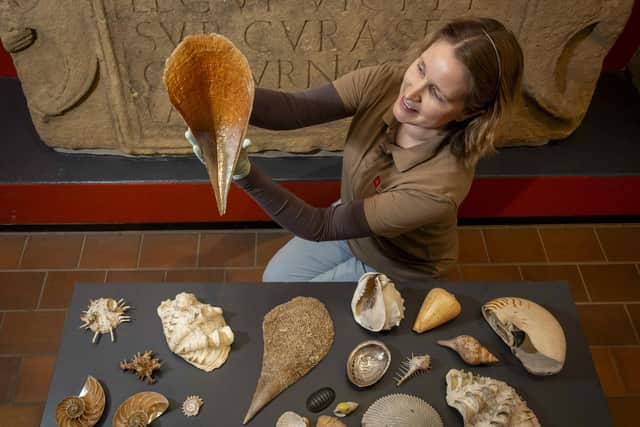Saved from a skip and on display in Northumberland: English Heritage receives globally important shells from Captain Cook’s fated third voyage
This article contains affiliate links. We may earn a small commission on items purchased through this article, but that does not affect our editorial judgement.
and live on Freeview channel 276
Containing more than 200 specimens, including an extinct species and several believed to have been sent back from Captain Cook’s ill-fated third voyage, the collection will go on display at Chesters Roman Fort and Museum in Northumberland for the first time in more than 100 years from tomorrow (March 13).
It was the lifelong passion of Bridget Atkinson (1732-1814). Despite never leaving Britain and rarely leaving Cumbria, Atkinson had far-reaching connections and amassed more than 1,200 shells from across the globe.
Advertisement
Hide AdAdvertisement
Hide AdHer passion for collecting was inherited by her grandson, John Clayton (1792-1890) who grew up with Chesters Roman Fort in his garden and whose own archaeological collections form the basis of the museum there.


Whilst most of the shells were sold along with the Clayton estate in 1930, around 200 of Bridget’s shells remained on display in the museum and were subsequently loaned to the zoology department of Armstrong College, now Newcastle University.
In the 1980s, the shells were thrown out during an office clear-out at the university. Thought lost forever, it has now been revealed that a passing lecturer, Dr John Buchanan, rescued the shells from a skip.
Donated to English Heritage by the Buchanan family, the shells have now returned to the museum at Chesters Roman Fort and have been reunited with a giant clam that was previously the only remaining piece of the collection.
Advertisement
Hide AdAdvertisement
Hide AdDr Frances McIntosh, English Heritage’s collections curator for Hadrian’s Wall and the North East, said: “We’ve always known about Bridget Atkinson’s collection, but had believed it completely lost. To discover that the shells have not only survived, but been kept safe and loved all this time, is nothing short of a miracle.
“Bridget Atkinson was a remarkable woman, with a real curiosity about the natural world. At a time when women generally collected shells to decorate their furniture and grottos with, Bridget was collecting them for their scientific and geographical interest rather than their aesthetics.
“As well as being a testament to Bridget’s character and contacts, this collection is also a superb record of Britain’s role in global trade in the late 18th Century, not to mention human impact on the natural world.”
Amongst the shells is a thorny oyster (Spondylus americanus) which, in an 1804 letter, Bridget begged her son Matthew (based in Jamaica) to obtain for her.
Advertisement
Hide AdAdvertisement
Hide AdFound along the Atlantic coast, from North Carolina down to the Caribbean and as far as Brazil, it is decorated with spiny protuberances around five centimetres long.
Others include a ‘Sun Shell’ (Astraea heliotropum), endemic to New Zealand, which was sent back to Bridget by George Dixon whilst he was serving as armourer under Captain Cook during his third voyage on HMS Resolution, and the giant clam Tridacna gigas, the largest bi-valve in the world that is now a CITES protected species.
Another spectacular shell is the chambered nautilus (Nautilus pompilius), which was amongst the most coveted of natural history items for collectors.
To find out more about Chesters Roman Fort and Museum or to book, go to www.english-heritage.org.uk/visit/places/chesters-roman-fort-and-museum-hadrians-wall